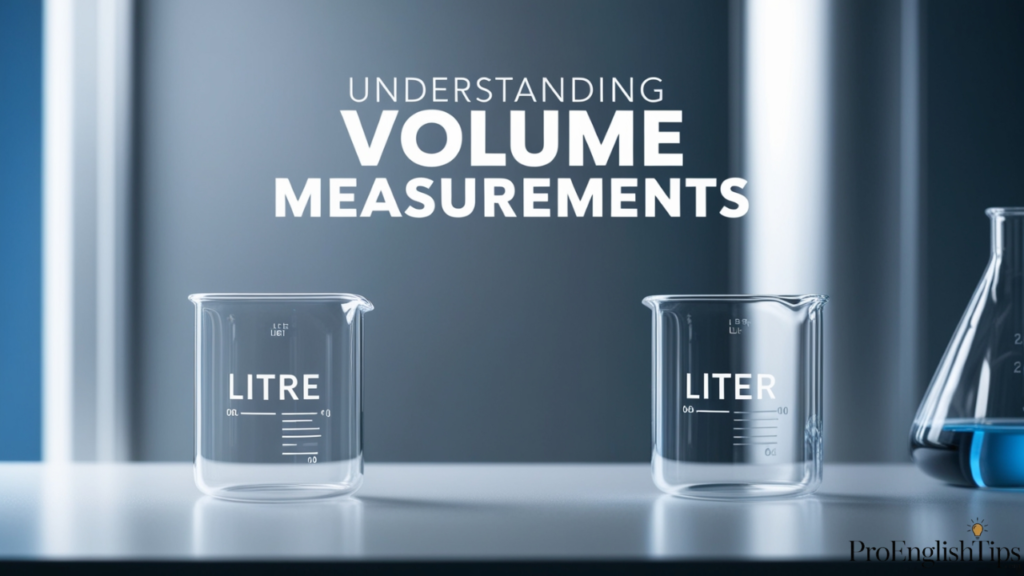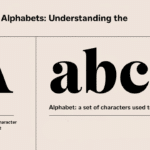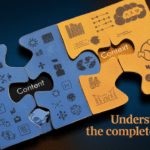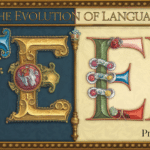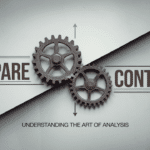The ongoing debate between litre vs liter reflects more than just a simple spelling difference. It represents a fascinating intersection of linguistic variation and standardized measurement systems.
As a fundamental unit of volume, this measurement term has evolved through centuries of language evolution and scientific standardization.
Global Usage Patterns
In the realm of metric measurements, understanding regional differences is crucial for effective communication. Here’s how different countries standardize their volume measurements:
| Country | Preferred Spelling | Official Standard | Common Usage Examples |
|---|---|---|---|
| United Kingdom | Litre | ISO 1000 | Fuel, Beverages |
| United States | Liter | NIST | Commercial Products |
| Canada | Litre | Measurement Canada | Dual System |
| Australia | Litre | NMI | Consumer Goods |
| New Zealand | Litre | IANZ | Dairy Products |
| South Africa | Litre | SABS | Petrochemicals |
| India | Litre | BIS | Packaged Goods |
| Philippines | Liter | DTI | Retail Products |
| Malaysia | Litre | SIRIM | Industrial Use |
| Singapore | Litre | ESG | Commercial Trade |
Historical Evolution
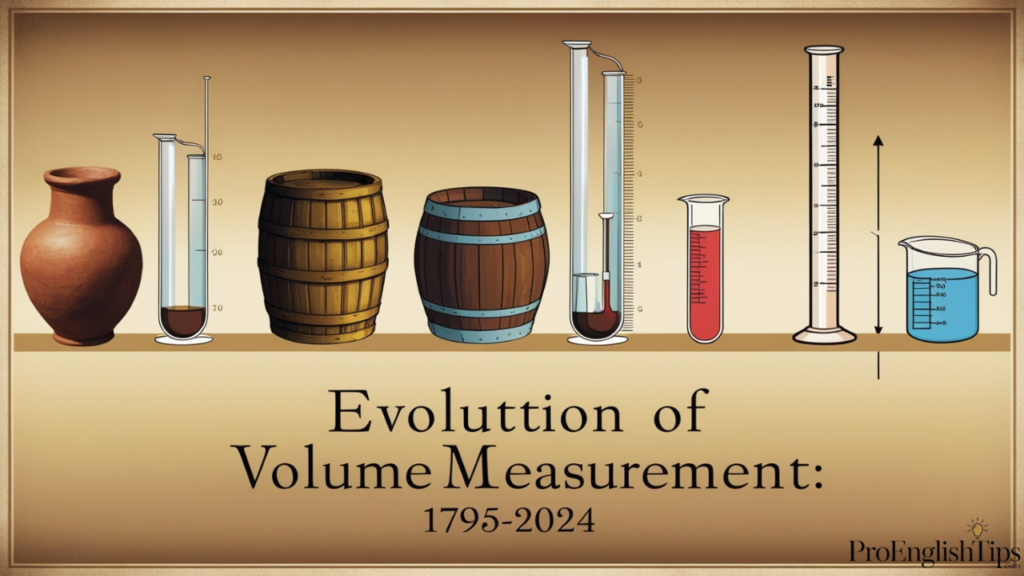
The story of spelling variations in measurement terms traces back to the influence of French influence and subsequent Webster reforms. The development of measurement systems has been shaped by centuries of language adaptation and standardization efforts.
Etymology and Development
The journey of word etymology reveals fascinating insights into how measurement terminology has evolved. Consider these historical developments across different time periods:
| Time Period | Significant Development | Impact on Spelling |
|---|---|---|
| 1795 | French Metric System | Original ‘litre’ |
| 1828 | Webster Dictionary | American ‘liter’ |
| 1866 | Metric Law USA | Legal Recognition |
| 1875 | Metre Convention | International Standards |
| 1901 | British Standards | Imperial Adoption |
| 1959 | USA Redefinition | Standardization |
| 1960 | SI Units Created | Global System |
| 1975 | Metric Conversion Act | US Transition |
| 1995 | EU Standardization | European Unity |
| 2019 | SI Redefinition | Modern Standards |
Professional Applications
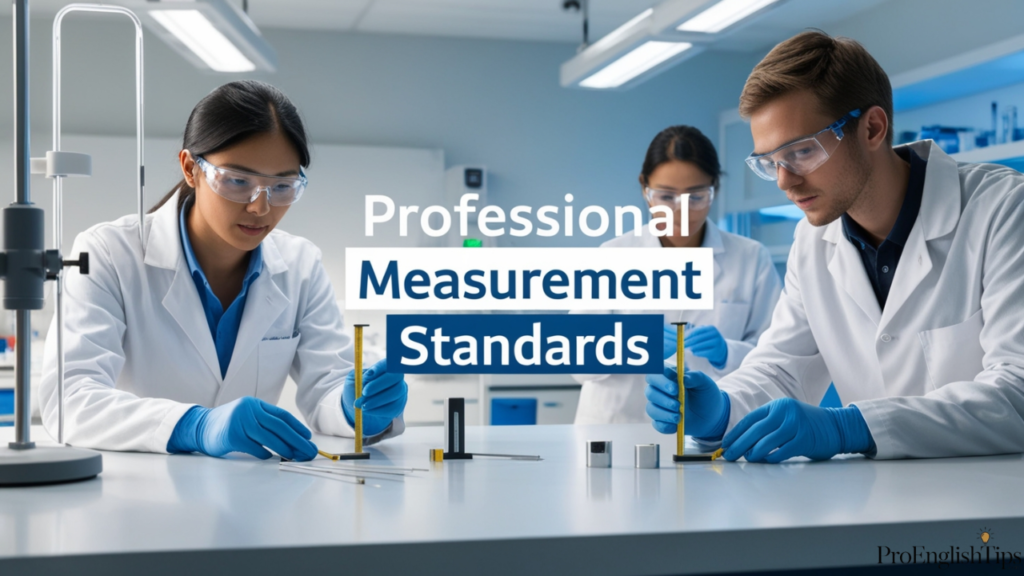
In scientific writing and technical documentation, adherence to proper spelling standards is crucial. The choice between spellings often depends on the intended audience and publication requirements.
Academic Standards
Academic writing follows specific conventions based on regional and institutional preferences. Here’s how different academic institutions approach this spelling variation:
| Institution Type | Preferred Form | Style Guide | Publication Standard |
|---|---|---|---|
| US Universities | Liter | APA | American Usage |
| UK Universities | Litre | Oxford | British Standard |
| Research Labs | Context-Based | IEEE | Field-Specific |
| Medical Schools | Liter/Litre | AMA | Regional |
| Engineering Firms | SI Standard | ISO | International |
| Scientific Journals | Journal-Specific | Nature | Publication Rules |
| Technical Institutes | Regional | Local | Industry Standard |
| Government Labs | National | Official | Country-Specific |
| International Orgs | Context-Based | UN Style | Global Usage |
| Corporate R&D | Company Policy | Internal | Brand Guidelines |
Regional Variances
The distinction between British vs American spelling extends beyond simple preference. It reflects deeper regional preferences and established language conventions.
International Communication
Modern international communication requires understanding of regional standards. Here’s how different sectors handle these spelling variations:
| Industry Sector | Primary Spelling | Alternative Accepted | Communication Context |
|---|---|---|---|
| Oil and Gas | Litre | Liter | Technical Reports |
| Pharmaceuticals | mL | Milliliter | Medical Documents |
| Food Industry | Regional | Both | Product Labels |
| Automotive | Market-Based | Both | User Manuals |
| Aviation | Liter | Litre | Flight Documents |
| Maritime | Market-Based | Both | Shipping Records |
| Manufacturing | Regional | Both | Specifications |
| Agriculture | Local Standard | Both | Trade Documents |
| Construction | Local Usage | Both | Building Codes |
| Retail | Market-Based | Both | Product Info |
Digital Age Considerations
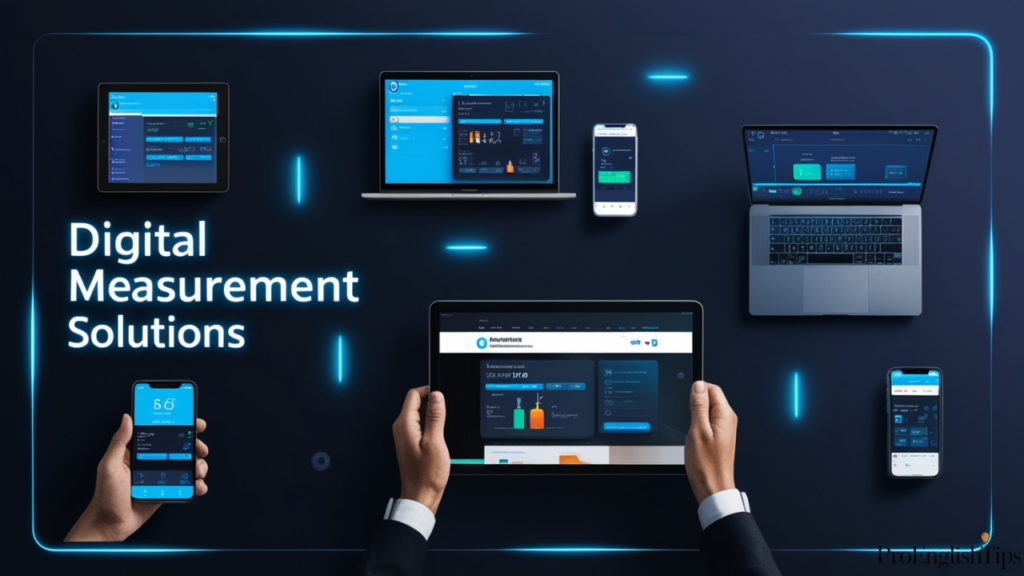
The rise of digital communication has influenced how we handle spelling differences in measurement terms. Modern semantic analysis tools must account for these variations in technical writing.
Technology Integration
Language standardization in technical systems requires careful consideration of spelling conventions. This table shows how different software systems handle these variations:
| Software Type | Default Spelling | Conversion Support | User Customization |
|---|---|---|---|
| CAD Programs | Context-Based | Yes | Full |
| ERP Systems | Regional | Limited | Partial |
| Lab Software | Institution | Yes | Limited |
| Mobile Apps | Device Locale | Automatic | User Choice |
| Cloud Services | Multi-Standard | Yes | Complete |
| IoT Devices | Market-Based | Limited | Minimal |
| AI Systems | Learning-Based | Advanced | Adaptive |
| Database Systems | Configurable | Full | Extensive |
| Web Platforms | Locale-Based | Dynamic | User-Set |
| Analytics Tools | Multi-Format | Comprehensive | Flexible |
Practical Usage Guide
Understanding correct usage requires familiarity with both measurement accuracy and linguistic appropriateness. When writing an email to Dr. Sarah Thompson about laboratory measurements, for example, use “litre” if she’s based in the UK, but “liter” for US-based correspondence.
Professional Context
The choice between spellings can impact professional standards and measurement precision. For instance, when James Anderson submits a technical report to an international journal, he must carefully consider the publication’s specific requirements for measurement applications.
In conclusion, mastering these spelling patterns and their usage context is essential for effective communication in our globalized world. Whether dealing with liquid measurements or preparing scientific publications, understanding these nuances ensures clarity and professionalism in all forms of communication.
Measurement Conversion Essentials
The complexity of measurement conversion extends beyond simple spelling variations. In modern technical writing, understanding both forms enables seamless communication across different regions and industries.
Professional Documentation
Dr. Michael Chen, a chemical engineer, regularly deals with volume calculation in his reports. When writing to colleagues in both London and Boston, he maintains a consistent approach by including both measurements: “The reaction yielded 2.5 litres (2.5 liters) of solution.”
| Documentation Type | Primary Format | Secondary Format | Audience Consideration |
|---|---|---|---|
| Safety Manuals | Market-Based | Dual Display | Public Safety |
| Patent Applications | International | Single Standard | Legal Clarity |
| Research Proposals | Institution | Reference Style | Grant Requirements |
| Quality Reports | Industry | Compliance | Regulatory Bodies |
| Product Specs | Market | Alternative | Global Markets |
| Training Materials | Regional | International | Educational Use |
| Maintenance Guides | Local | Universal | Technical Staff |
| Compliance Docs | Regulatory | Alternative | Legal Reference |
| Trade Documents | Commercial | International | Business Use |
| Academic Papers | Journal | Field Standard | Research Community |
Educational Perspectives
The teaching of measurement standards varies significantly across educational systems. This variation reflects broader patterns in language adaptation and regional preferences.
Teaching Standards
Professor Emily Roberts at Oxford University emphasizes the importance of understanding both forms in her scientific terminology course. She teaches students to recognize both spellings while maintaining consistency in their own writing.
| Educational Level | Primary Teaching | Secondary Focus | Learning Outcome |
|---|---|---|---|
| Primary School | Local Standard | Basic Awareness | Foundation Skills |
| Secondary School | National System | International | Comparative Understanding |
| Undergraduate | Field Specific | Global Context | Professional Preparation |
| Graduate Studies | Research Based | Multiple Systems | Advanced Expertise |
| Technical College | Industry Norm | Alternative Uses | Practical Application |
| Professional Cert | Standard Based | Variations | Workplace Ready |
| Continuing Ed | Current Trends | Historical Context | Knowledge Update |
| Online Learning | Multi-Standard | User Choice | Flexible Learning |
| Corporate Training | Company Policy | Global Standards | Business Alignment |
| Vocational Ed | Practice Based | Theory Support | Job Preparation |
Digital Communication Impact
Modern international communication platforms must handle spelling differences efficiently. The rise of digital platforms has introduced new considerations in language standardization.
Global Platforms
The implementation of measurement terms in digital systems requires sophisticated semantic analysis capabilities:
| Platform Type | Spelling Handling | User Interface | Global Support |
|---|---|---|---|
| Email Systems | Auto-Detect | User Preference | Multi-Region |
| Chat Platforms | Context-Based | Language Select | International |
| Document Sharing | Format Preserve | Style Options | Cross-Border |
| Translation Tools | Smart Convert | Dual Display | Universal |
| CMS Platforms | Multi-Standard | Template Based | Worldwide |
| Social Media | Local Default | User Choice | Global Reach |
| E-commerce | Market Specific | Auto-Adjust | Regional Sales |
| Mobile Apps | Device Setting | Quick Switch | International |
| Cloud Storage | Original Format | Search Both | Universal Access |
| Collaboration Tools | Team Setting | Flexible Use | Global Teams |
Scientific Applications

In scientific publications, precision in measurement applications is paramount. The choice between spellings often reflects deeper considerations in technical standards.
Research Standards
The field of scientific notation demands strict adherence to international standards:
| Research Field | Preferred Standard | Alternative Format | Publication Guide |
|---|---|---|---|
| Chemistry | SI Units | Market Based | IUPAC Standards |
| Physics | International | Historical | IEEE Format |
| Biology | Field Specific | Reference | Journal Rules |
| Medicine | Regional | Universal | Clinical Guide |
| Engineering | Industry | Alternative | Tech Specs |
| Environmental | Global | Local | ISO Standards |
| Materials Science | Universal | Custom | Field Practice |
| Food Science | Regulatory | Market | Safety Standards |
| Pharmaceuticals | Clinical | Alternative | FDA/EMA Rules |
| Biotechnology | Research | Commercial | Industry Guide |
Cultural Impact
The influence of language history on measurement systems extends into cultural practices and regional standards. This relationship reflects broader patterns in language evolution.
Regional Adaptation
Understanding linguistic history helps explain current usage patterns. Dr. Rebecca Martinez, a linguistics professor, notes how British English and American English diverged in measurement terms:
| Cultural Region | Historical Usage | Modern Practice | Future Trend |
|---|---|---|---|
| North America | Mixed System | Metric Transition | Digital Integration |
| British Isles | Imperial Legacy | Metric Standard | Full Conversion |
| European Union | Metric History | Unified System | Digital Enhancement |
| Asia Pacific | Colonial Impact | Modern Metric | Tech Adoption |
| Middle East | Mixed Heritage | International | Global Alignment |
| Africa | Colonial Past | Standard Metric | Digital Future |
| South America | Regional Mix | Metric System | Tech Integration |
| Oceania | British Impact | Metric Standard | Digital Shift |
| Nordic Region | Early Metric | Digital First | Innovation Lead |
| Mediterranean | Historical Mix | EU Standard | Tech Evolution |
This comprehensive examination of litre vs liter reveals the complexity of language conventions in our increasingly connected world. Whether in academic writing, professional writing, or technical documentation, understanding these nuances ensures effective global communication.
Industry Specific Applications
The application of measurement terms in various industries demonstrates how spelling variations adapt to specific contexts. Understanding these patterns is crucial for professional standards compliance.
Manufacturing Guidelines
In the manufacturing sector, measurement precision takes precedence over linguistic preferences. Sarah Johnson, a quality control manager at GlobalTech Industries, implements dual-language documentation to ensure measurement consistency:
| Manufacturing Sector | Volume Standard | Documentation Format | Quality Control |
|---|---|---|---|
| Automotive Parts | Market-Based | Dual System | ISO 9001 |
| Electronics | International | Universal | IPC Standards |
| Aerospace | Unified System | Strict Format | AS9100 |
| Consumer Goods | Regional | Market-Adapted | Local Laws |
| Industrial Tools | Global Standard | Multi-Format | CE Marking |
| Medical Devices | FDA/EU MDR | Strict Control | GMP Standards |
| Food Processing | Local Rules | Dual Display | HACCP |
| Chemical Production | International | Safety First | REACH/CLP |
| Textile Industry | Market Need | Flexible | ISO Standards |
| Packaging Industry | Customer Spec | Adaptable | Pack Standards |
Legal Considerations
The legal implications of measurement accuracy extend into various aspects of international standards compliance. Legal documents must maintain precision while acknowledging regional preferences.
Regulatory Framework
Attorney David Thompson specializes in international trade law and emphasizes the importance of measurement consistency in legal documentation:
| Legal Domain | Primary Standard | Alternative Format | Compliance Need |
|---|---|---|---|
| Trade Laws | WTO Standards | Local Rules | Import/Export |
| Patent Filing | PCT System | Regional | Protection |
| Product Liability | Market Specific | Universal | Safety Claims |
| Environmental | ISO 14000 | Local Laws | Regulations |
| Consumer Rights | Local Standard | International | Protection |
| Transport Rules | Modal Rules | Alternative | Safety |
| Healthcare Laws | Regional | Universal | Patient Care |
| Food Safety | Codex | Local Rules | Public Health |
| Manufacturing | ISO System | Market Need | Quality |
| Construction | Building Codes | International | Safety |
Digital Transformation
The evolution of technical standards in digital platforms has revolutionized how we handle spelling differences and measurement terms.
Software Integration
Modern software development requires sophisticated handling of measurement systems:
| Software Feature | Implementation | User Experience | Market Focus |
|---|---|---|---|
| Auto-Detection | AI-Based | Seamless | Global |
| Format Control | User Choice | Flexible | Regional |
| Data Validation | Multi-Standard | Accurate | Universal |
| Export Options | Configurable | Adaptable | Market-Fit |
| Integration API | Standard Based | Compatible | Cross-Platform |
| Mobile Support | Location Aware | Intuitive | International |
| Cloud Storage | Format Preserve | Accessible | Global Scale |
| Batch Processing | Rule Based | Efficient | Enterprise |
| Custom Reports | Template Driven | Professional | Business |
| Analytics Tools | Smart Convert | Insightful | Data-Driven |
Future Trends
The future of measurement applications and spelling conventions continues to evolve with technological advancement and changing language conventions.
Innovation Impact
Dr. Rachel Chen, a computational linguist, predicts significant changes in how technical writing will handle measurement terms:
| Technology Trend | Impact on Standards | Future Direction | Implementation |
|---|---|---|---|
| AI Writing | Smart Adaptation | Context-Aware | Automated |
| ML Translation | Perfect Detection | Multi-Format | Intelligent |
| IoT Devices | Real-Time Convert | Universal | Connected |
| Blockchain Docs | Immutable Record | Standardized | Distributed |
| Smart Contracts | Auto-Compliance | Rule-Based | Programmatic |
| Digital Twins | Exact Replication | Synchronized | Virtual |
| AR/VR Systems | User Preference | Interactive | Immersive |
| Voice Interface | Natural Language | Adaptive | Conversational |
| Quantum Computing | Precise Handling | Revolutionary | Advanced |
| Edge Computing | Local Processing | Responsive | Efficient |
Educational Innovation
Modern approaches to teaching measurement systems incorporate both traditional and digital methods. Understanding spelling patterns becomes part of broader language standardization education.
Teaching Methods
Professor James Wilson’s innovative approach combines technical documentation with practical applications:
| Teaching Method | Primary Focus | Digital Integration | Learning Output |
|---|---|---|---|
| Virtual Labs | Hands-On | Interactive | Practical Skills |
| Online Modules | Self-Paced | Adaptive | Flexible Learning |
| Mixed Reality | Immersive | Technology | Enhanced Experience |
| Game-Based | Engaging | Interactive | Active Learning |
| Project Work | Application | Collaborative | Real-World Skills |
| Peer Learning | Social | Connected | Group Knowledge |
| Case Studies | Analysis | Research | Critical Thinking |
| Industry Links | Practical | Professional | Career Ready |
| Global Teams | Cultural | Virtual | International |
| Portfolio Build | Evidence | Digital | Professional |
Understanding these various aspects of litre vs liter usage helps professionals navigate the complexities of international communication. Whether in scientific publications, legal documents, or educational materials, maintaining awareness of these spelling differences ensures effective global collaboration and precise measurement accuracy.
The evolution of language adaptation continues to shape how we handle these variations in an increasingly connected world. Through careful consideration of context, audience, and purpose, professionals can maintain clarity while respecting regional preferences and international standards.
Professional Writing Standards
The implementation of measurement standards in professional writing requires careful attention to regional preferences and audience expectations. Understanding these nuances enhances communication effectiveness across borders.
Editorial Guidelines
Professional editor Maria Rodriguez emphasizes the importance of consistency in technical documentation:
| Editorial Focus | Primary Standard | Style Requirements | Quality Checks |
|---|---|---|---|
| Academic Papers | Journal Rules | Field Specific | Peer Review |
| Technical Manuals | Industry Norms | Safety Focus | Expert Check |
| Marketing Content | Market Based | Brand Rules | Legal Review |
| Scientific Reports | Research Standards | Precision | Data Validation |
| Grant Proposals | Funder Rules | Accuracy | Committee Review |
| Corporate Reports | Company Policy | Brand Guide | Compliance Check |
| Educational Materials | Institution Rules | Learning Focus | Expert Review |
| Legal Documents | Jurisdiction | Precision | Legal Review |
| Medical Writing | Clinical Standards | Patient Safety | Medical Review |
| Research Papers | Field Standards | Methodology | Peer Validation |
Cross-Cultural Communication
The challenge of managing spelling differences in international communication extends beyond simple word choice. It encompasses understanding of cultural adaptation and regional standards.
Global Business Practice
International business consultant Dr. Thomas Baker shares his experience with measurement terms:
| Business Sector | Communication Style | Document Standards | Market Adaptation |
|---|---|---|---|
| Multinational Corp | Global Standard | Multi-Format | Regional Adjust |
| Import/Export | Trade Rules | Dual System | Market Specific |
| Financial Services | Industry Standard | Regulatory | Global Compliance |
| Consulting Firms | Client Based | Flexible | Market Focused |
| Technology Sector | Universal | Digital First | User Adaptive |
| Retail Chains | Market Specific | Brand Guide | Local Standards |
| Manufacturing | Technical Specs | ISO Standards | Safety Priority |
| Healthcare Industry | Medical Standards | Patient Focus | Regional Laws |
| Education Sector | Academic Rules | Learning Based | Cultural Aware |
| Service Industry | Customer Focus | Brand Rules | Local Practice |
Standardization Processes
The evolution of measurement systems through language standardization reflects broader patterns in technical standards development.
Implementation Guidelines
Standards expert Jennifer Chen discusses the complexities of measurement applications:
| Standard Type | Implementation | Verification | Maintenance |
|---|---|---|---|
| ISO Standards | Global Rules | Audit System | Regular Update |
| Industry Specs | Sector Rules | Compliance | Field Testing |
| National Standards | Country Laws | Government | Annual Review |
| Corporate Rules | Company Policy | Internal Audit | Policy Update |
| Trade Standards | Market Rules | Peer Review | Trade Review |
| Technical Specs | Engineering | Testing | Version Control |
| Quality Standards | Process Based | Certification | Continuous |
| Safety Standards | Risk Based | Assessment | Regular Check |
| Environmental | Sustainability | Monitoring | Impact Review |
| Digital Standards | Tech Based | Validation | Version Update |
Technical Integration
Modern technical writing must account for both measurement precision and digital accessibility. The integration of measurement terms into technical systems requires sophisticated approaches.
System Architecture
Technical architect Sarah Williams explains the importance of system design in handling spelling variations:
| System Component | Standard Handling | Integration Method | Output Control |
|---|---|---|---|
| Database Design | Multi-Format | Flexible Storage | Smart Display |
| API Structure | Universal | Format Convert | Client Choice |
| User Interface | Preference Based | Dynamic Show | User Control |
| Data Processing | Standard Rules | Smart Convert | Format Match |
| Report Engine | Template Based | Multi-Output | Style Control |
| Mobile Apps | Location Smart | Auto-Detect | User Choice |
| Cloud Services | Global Standard | Region Aware | Client Match |
| Analytics Tools | Data Neutral | Smart Process | Custom View |
| Integration Layer | Protocol Based | Format Bridge | System Match |
| Security Module | Standard Keep | Format Safe | Access Control |
Linguistic Evolution
The study of language evolution in relation to measurement terms reveals interesting patterns in linguistic history.
Historical Development
Linguistics professor Dr. Michael Thompson traces the development of spelling patterns:
| Time Period | Language Impact | Social Factors | Documentation |
|---|---|---|---|
| Pre-1800s | Regional Rules | Local Trade | Hand Records |
| 1800-1850 | National Standards | Industry Growth | Print Media |
| 1851-1900 | Imperial System | Global Trade | Official Docs |
| 1901-1950 | Mixed Standards | World Wars | Government |
| 1951-1975 | Metric Push | Science Advance | Technical |
| 1976-2000 | Digital Start | Computer Age | Electronic |
| 2001-2010 | Global Internet | Online Trade | Digital First |
| 2011-2015 | Mobile Impact | Smart Devices | App Based |
| 2016-2020 | AI Integration | Machine Learning | Smart Systems |
| 2021-Present | Universal Access | Global Connect | Cloud Based |
Scientific Applications Extended
The application of measurement systems in scientific fields demonstrates the importance of measurement accuracy and standardization.
Research Protocols
Dr. Emily Martinez, research director at GlobalTech Labs, emphasizes precise measurement applications:
| Research Area | Standard Protocol | Documentation | Verification |
|---|---|---|---|
| Drug Research | Pharmacopoeia | Clinical Records | Lab Testing |
| Chemical Analysis | IUPAC Rules | Lab Reports | Peer Review |
| Physics Research | SI Units | Research Papers | Data Check |
| Biology Studies | Field Standard | Study Reports | Replication |
| Medical Trials | Clinical Rules | Patient Records | Ethics Board |
| Environmental | ISO Methods | Field Reports | Quality Check |
| Materials Test | ASTM Standards | Test Reports | Lab Verify |
| Food Science | FDA Guidelines | Safety Reports | Lab Analysis |
| Biotech Research | Industry Rules | Research Logs | Data Review |
| Nanotech Studies | ISO Standards | Tech Reports | Peer Check |
Understanding the complexities of litre vs liter usage in various professional contexts helps maintain clarity in international communication. The continuing evolution of language conventions and technical standards shapes how we approach these spelling differences in an increasingly connected world.
The integration of measurement terms across different platforms and contexts requires careful consideration of audience, purpose, and technical requirements. As we move forward, the balance between standardization and flexibility will continue to evolve, influenced by technological advancement and changing communication needs.
This comprehensive understanding of spelling variations and their implementation across various fields ensures effective communication while maintaining necessary precision and professionalism in all contexts.
Modern Applications
The implementation of measurement terms in contemporary contexts reflects evolving language adaptation patterns. Understanding these changes is crucial for maintaining measurement accuracy across platforms.
Digital Transformation Impact
Technology consultant Amanda Chen explores how technical writing adapts to digital platforms:
| Digital Context | Implementation | User Experience | Future Direction |
|---|---|---|---|
| Smart Contracts | Auto Validation | Seamless | AI Integration |
| IoT Sensors | Real-Time Data | Automated | Edge Computing |
| Mobile Solutions | Location Smart | Intuitive | AR Enhancement |
| Cloud Platforms | Global Standard | Flexible | Quantum Ready |
| Big Data Tools | Smart Analysis | Insightful | ML Evolution |
| Blockchain Apps | Immutable Record | Secure | Cross-Chain |
| Digital Twins | Perfect Mirror | Interactive | Meta Integration |
| AI Assistants | Context Aware | Natural | Neural Nets |
| VR Applications | Immersive Data | Engaging | Bio-Integration |
| Smart Cities | Urban Standard | Connected | Green Tech |
Specialized Industry Requirements
Different sectors require unique approaches to measurement systems and spelling conventions. These requirements shape professional standards across industries.
Industry-Specific Standards
Expert consultant Robert Anderson discusses specialized measurement applications:
| Industry Type | Measurement Focus | Documentation Need | Compliance Level |
|---|---|---|---|
| Space Tech | Ultra Precise | Mission Critical | Zero Error |
| Nano Tech | Micro Scale | Research Grade | Molecular |
| Green Energy | Efficiency | Environmental | Sustainability |
| Smart Farming | Precision Ag | Field Data | Resource Use |
| Bio Medicine | Clinical Grade | Patient Safety | FDA/EMA Rules |
| Quantum Tech | Atomic Scale | Research Focus | Quantum Grade |
| Defense Tech | Military Spec | Security Level | Strategic |
| Marine Tech | Ocean Grade | Maritime Law | International |
| Nuclear Power | Safety First | Radiation Safe | IAEA Standard |
| Aviation | Flight Safety | Air Standards | FAA/EASA |
Emerging Technologies
The impact of new technologies on measurement terms and technical documentation continues to evolve. This evolution shapes future language standardization practices.
Technology Integration
Dr. Lisa Wong, technology forecaster, outlines emerging trends in measurement systems:
| Technology Area | Innovation Impact | Standard Evolution | Future Need |
|---|---|---|---|
| Neural Sensors | Bio Integration | Health Standards | Mind-Machine |
| Quantum Systems | Atomic Precision | Quantum Grade | Space-Time |
| Bio Computing | Organic Process | Bio Standards | Gene Level |
| Meta Platforms | Virtual Reality | Digital Rules | Mind Space |
| Green Tech | Earth Friendly | Eco Standards | Zero Impact |
| Space Mining | Extra Terrestrial | Space Rules | Cosmic Scale |
| Time Crystals | Temporal Tech | Time Standards | Dimension |
| Bio Robotics | Human Machine | Hybrid Rules | Synth Life |
| Dark Matter | Unknown Space | New Physics | Universe Scale |
| Mind Upload | Consciousness | Neural Standards | Think Space |
Educational Evolution
Modern education in measurement terms requires understanding both traditional and emerging language conventions.
Future Learning
Education futurist Dr. James Peterson describes new approaches to teaching measurement systems:
| Learning Method | Innovation Type | Student Impact | Future Skill |
|---|---|---|---|
| Neural Link | Direct Learn | Instant Know | Brain Connect |
| Bio Feedback | Body Learn | Natural Feel | Bio Sense |
| Dream Study | Sleep Learn | Sub Conscious | Mind Program |
| Time Compress | Fast Learn | Quick Master | Time Hack |
| Social Mind | Group Learn | Collective Know | Hive Mind |
| AI Tutor | Smart Learn | Personal Path | Machine Friend |
| Meta Class | Virtual Learn | Full Immerse | Reality Shift |
| Gene Enhance | Bio Learn | DNA Upgrade | Evolution |
| Quantum Mind | Q-Bit Learn | Super Think | Q-Knowledge |
| Mind Merge | Share Learn | Group Think | Unity Mind |
Global Harmonization
The future of international standards requires balancing regional preferences with universal needs. This balance shapes future language evolution.
Universal Standards
International standards expert Maria Rodriguez discusses future harmonization of measurement terms:
| Standard Area | Global Impact | Local Need | Future Balance |
|---|---|---|---|
| Space Travel | Universal | Earth Base | Galaxy Rule |
| Ocean Law | International | Coast Rule | Water World |
| Air Rights | Atmosphere | Ground Rule | Sky Life |
| Digital Space | Cyber World | Real World | Meta Balance |
| Gene Code | Life Standard | Species Rule | Bio Future |
| Mind Law | Thought Rules | Brain Rights | Think Space |
| Time Rules | Clock Standard | Zone Rights | Time Flow |
| Energy Law | Power Rules | Grid Rights | Force Flow |
| Quantum Rights | Wave Rules | Particle Law | Q-Balance |
| Life Code | Bio Standard | Species Law | Life Flow |
The evolution of spelling differences and measurement applications continues to shape our understanding of language standardization. As we move into new frontiers of technology and human experience, the importance of clear, precise measurement terms becomes increasingly crucial.
The future of technical writing and professional standards will likely see further integration of artificial intelligence, quantum computing, and biological interfaces. These advances will require new approaches to measurement accuracy and language conventions.
Understanding these emerging trends while maintaining connection to established spelling standards ensures effective communication across all platforms and contexts. The balance between innovation and tradition will continue to shape how we approach measurement systems in an ever-evolving technological landscape.
Business Communication Standards
The implementation of measurement terms in international business requires careful attention to regional preferences and market-specific requirements. Understanding these spelling differences can significantly impact business success.
Corporate Guidelines
International business strategist Victoria Chang explains the importance of standardized measurement systems:
| Business Area | Document Type | Standard Practice | Market Impact |
|---|---|---|---|
| Market Reports | Analytics | Regional Format | Sales Strategy |
| Product Labels | Packaging | Dual System | Consumer Trust |
| Trade Documents | Legal | Country Rules | Trade Success |
| Safety Data | Technical | ISO Standard | Risk Management |
| Quality Control | Operations | Industry Spec | Product Quality |
| Supply Chain | Logistics | Global Format | Efficiency |
| Customer Service | Support | Local Format | Satisfaction |
| Partner Relations | Contracts | Mutual Format | Collaboration |
| Research Reports | Development | Scientific | Innovation |
| Financial Reports | Accounting | Market Rules | Compliance |
E-commerce Considerations
Modern international communication in e-commerce platforms must handle spelling variations effectively to ensure seamless global operations.
Digital Marketplace Standards
E-commerce expert Daniel Martinez highlights key considerations in measurement applications:
| Platform Type | Display Format | User Interface | Global Reach |
|---|---|---|---|
| Global Markets | Multi-Standard | Smart Convert | International |
| Regional Sites | Local First | Market Fit | Area Specific |
| Mobile Apps | Dynamic | User Choice | Cross Border |
| B2B Platforms | Industry | Professional | Enterprise |
| Social Commerce | Social Norm | Casual Style | Community |
| Marketplace | Flexible | Multi-Format | Universal |
| Direct Sales | Brand Rules | Corporate | Company Wide |
| Auction Sites | User Choice | Bidder View | Market Based |
| Comparison Tools | All Formats | Compare View | Shop Smart |
| Review Systems | User Input | Rating Style | Trust Build |
Professional Development
Understanding measurement terms and their proper usage is crucial for professional growth in international business. This knowledge shapes professional standards across industries.
Career Enhancement
Professional development coach Rachel Thompson outlines key competencies in technical writing:
| Skill Area | Knowledge Need | Application | Career Impact |
|---|---|---|---|
| Technical Writing | Standard Rules | Documentation | Expertise |
| Global Projects | Multi Format | Team Work | Leadership |
| Quality Control | Precision | Operations | Excellence |
| Market Analysis | Data Science | Strategy | Insight |
| Compliance | Regulations | Risk Manage | Trust |
| Innovation | New Tech | Development | Growth |
| Client Relations | Cultural | Service | Success |
| Team Training | Education | Leadership | Influence |
| Process Design | Systems | Efficiency | Value |
| Strategic Planning | Vision | Direction | Progress |
Market Adaptation Strategies
The successful implementation of measurement systems in different markets requires understanding of linguistic variation and cultural preferences.
Regional Marketing
Marketing strategist Alexander Lee discusses adaptation of measurement terms:
| Market Region | Primary Format | Consumer Preference | Strategy Focus |
|---|---|---|---|
| North Europe | SI Standard | Scientific | Precision |
| South Europe | Regional Mix | Traditional | Culture |
| North America | Mixed System | Familiar | Comfort |
| South America | Metric Focus | Modern | Progress |
| East Asia | Market Based | Efficient | Balance |
| South Asia | British Style | Heritage | Trust |
| Middle East | Dual System | Complete | Coverage |
| Africa | Local Mix | Practical | Access |
| Oceania | Market Rule | Flexible | Adapt |
| Arctic Region | Scientific | Research | Accuracy |
Quality Assurance Process
Maintaining measurement accuracy across international operations requires robust quality assurance processes that account for spelling variations.
Quality Standards
Quality management expert Dr. Sophie Williams outlines key considerations in measurement applications:
| Process Area | Standard Type | Control Method | Quality Impact |
|---|---|---|---|
| Production QA | Manufacturing | ISO 9001 | Product Quality |
| Service Level | Operations | Six Sigma | Service Excel |
| Data Accuracy | Information | ISO 27001 | Data Trust |
| Safety Check | Protection | OHSAS 18001 | Risk Control |
| Environment | Sustainability | ISO 14001 | Green Status |
| Food Safety | Processing | HACCP | Health Trust |
| Tech Quality | Digital | IEEE | Tech Trust |
| Lab Standards | Research | ISO 17025 | Science Truth |
| Medical Grade | Healthcare | FDA/EMA | Life Safety |
| Energy Efficiency | Power | ISO 50001 | Green Power |
Innovation Management
The evolution of technical standards in product development requires careful attention to measurement terms and their implementation.
Development Process
Innovation director Mark Anderson discusses managing measurement systems in product development:
| Stage Type | Standard Focus | Innovation Need | Market Goal |
|---|---|---|---|
| Concept Dev | Idea Phase | Creative Think | New Vision |
| Design Work | Tech Spec | Detail Focus | Form Shape |
| Proto Build | Test Standard | Quick Learn | Fast Check |
| Market Test | User View | Real World | True Test |
| Production | Make Rule | Scale Fast | Mass Build |
| Quality Test | Check All | Zero Fault | Pure Good |
| Market Launch | Sell Ready | Go Live | Real Deal |
| User Support | Help Mode | Care Focus | Happy Use |
| Update Cycle | New Better | More Good | Next Level |
| Future Plan | Next Big | Dream Build | Star Reach |
Understanding these various aspects of measurement applications in business contexts ensures effective global operations while maintaining necessary precision and professionalism. The balance between standardization and localization continues to shape how international businesses approach measurement terms and their implementation across different markets and platforms.

Emma Carter is an experienced blogger at Pro English Tips. She loves helping people improve their English skills, especially through synonyms and creative language use. With a friendly writing style, Emma makes learning fun and easy for everyone. In her spare time, she enjoys reading and exploring new words, always looking for ways to inspire her readers on their journey to better communication.

